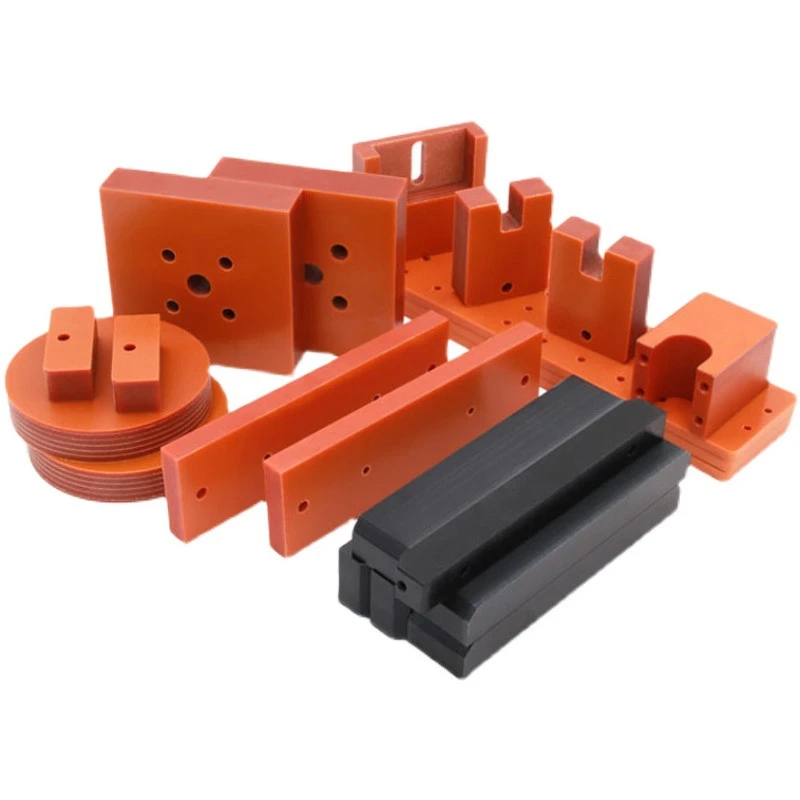Composition and Manufacturing Process
Raw Materials
Phenolic paper sheets are manufactured using layers of kraft paper or other types of specialized paper as the base material. These paper layers are impregnated with phenolic resin, which acts as a binding agent and provides the desired properties to the final product. The choice of paper type can vary depending on the specific requirements of the end application.
In contrast, phenolic cotton cloth sheets utilize woven cotton fabric as the core material. The cotton fabric is carefully selected for its quality and weave pattern, which contributes to the overall strength and flexibility of the finished product. The fabric is then impregnated with phenolic resin, similar to the paper-based counterpart.
Impregnation Process
The impregnation process for both materials involves saturating the base material (paper or cotton cloth) with liquid phenolic resin. This process is typically carried out using specialized equipment that ensures uniform distribution of the resin throughout the material. The impregnated sheets are then partially cured to create a semi-solid state, known as B-stage, which allows for easier handling and further processing.
Curing and Lamination
After impregnation, both phenolic paper sheets and phenolic cotton cloth sheets undergo a curing process. This involves applying heat and pressure to fully cure the phenolic resin, resulting in a hard, thermoset material. The curing process can be fine-tuned to achieve specific properties in the final product.
For thicker sheets or custom shapes, multiple layers of impregnated material can be laminated together during the curing process. This lamination allows for the creation of complex structures and tailored mechanical properties.
Physical and Mechanical Properties
Strength and Rigidity
Phenolic paper sheets are known for their high strength-to-weight ratio and excellent rigidity. The layered structure of the paper, combined with the cured phenolic resin, creates a material that resists bending and maintains its shape under stress. This makes phenolic paper sheets ideal for applications requiring structural integrity and dimensional stability.
Phenolic cotton cloth sheets, while also strong, offer a different balance of properties. The woven fabric base provides enhanced tear resistance and impact strength compared to paper-based sheets. This makes cotton cloth sheets more suitable for applications where flexibility and resistance to dynamic loads are crucial.
Thermal Properties
Both phenolic paper and cotton cloth sheets exhibit good thermal resistance, making them suitable for use in high-temperature environments. However, there are subtle differences in their thermal behavior. Phenolic paper sheets generally have slightly better heat resistance and lower thermal expansion coefficients, making them preferable in applications where dimensional stability under temperature fluctuations is critical.
Phenolic cotton cloth sheets, while still thermally resistant, may offer better thermal insulation properties due to the natural insulating characteristics of cotton fibers. This can be advantageous in certain electrical and thermal management applications.
Electrical Properties
Electrical insulation is a key application for both types of phenolic sheets. Phenolic paper sheets typically exhibit excellent dielectric strength and low dielectric loss, making them ideal for use in transformers, switchgear, and other high-voltage applications. The uniform structure of the paper layers contributes to consistent electrical properties throughout the material.
Phenolic cotton cloth sheets also provide good electrical insulation but may have slightly different characteristics due to the woven fabric structure. The cotton base can introduce some variability in electrical properties, but this can be advantageous in applications requiring a combination of electrical insulation and mechanical flexibility.
Applications and Industry-Specific Considerations
Electrical and Electronics Industry
In the electrical and electronics sector, both phenolic paper sheets and phenolic cotton cloth sheets find extensive use. Phenolic paper sheets are often preferred for applications such as transformer insulation, printed circuit board substrates, and terminal boards. Their high dielectric strength and dimensional stability make them ideal for these precision-oriented applications.
Phenolic cotton cloth sheets are frequently employed in flexible insulation applications, such as motor winding insulation and cable wrapping. Their ability to conform to irregular shapes and resist tearing during installation makes them valuable in these dynamic environments.
Automotive and Transportation
The automotive industry utilizes both types of phenolic sheets for various components. Phenolic paper sheets are often used in under-hood applications, such as gaskets and insulating barriers, where their heat resistance and dimensional stability are crucial. They also find use in structural components like interior panels and underbody shields.
Phenolic cotton cloth sheets are employed in applications where vibration damping and flexibility are required. This includes use in automotive interiors, such as door panels and headliners, where their ability to conform to complex shapes is advantageous.
Aerospace and Defense
In the aerospace sector, both materials play important roles. Phenolic paper sheets are utilized in aircraft interiors, structural components, and electrical systems due to their lightweight nature and fire-resistant properties. Their high strength-to-weight ratio makes them valuable in applications where weight reduction is critical.
Phenolic cotton cloth sheets find use in aerospace applications requiring flexibility and impact resistance. This includes insulation for wiring harnesses, protective coverings for sensitive equipment, and components subjected to vibration and mechanical stress.
Conclusion
Phenolic paper sheets and phenolic cotton cloth sheets each offer unique advantages, making them valuable materials in various industrial applications. The choice between the two depends on specific requirements such as rigidity, flexibility, electrical properties, and thermal performance. Understanding these differences allows engineers and manufacturers to select the most appropriate material for their applications, ensuring optimal performance and longevity of the final product. As technology advances, ongoing research continues to enhance the properties of both materials, expanding their potential uses across industries.
Contact Us
If you're looking for high-quality phenolic sheets or need assistance in selecting the right material for your application, don't hesitate to reach out to our team of experts. Contact us at info@jhd-material.com for personalized support and to learn more about our extensive range of insulating materials.






